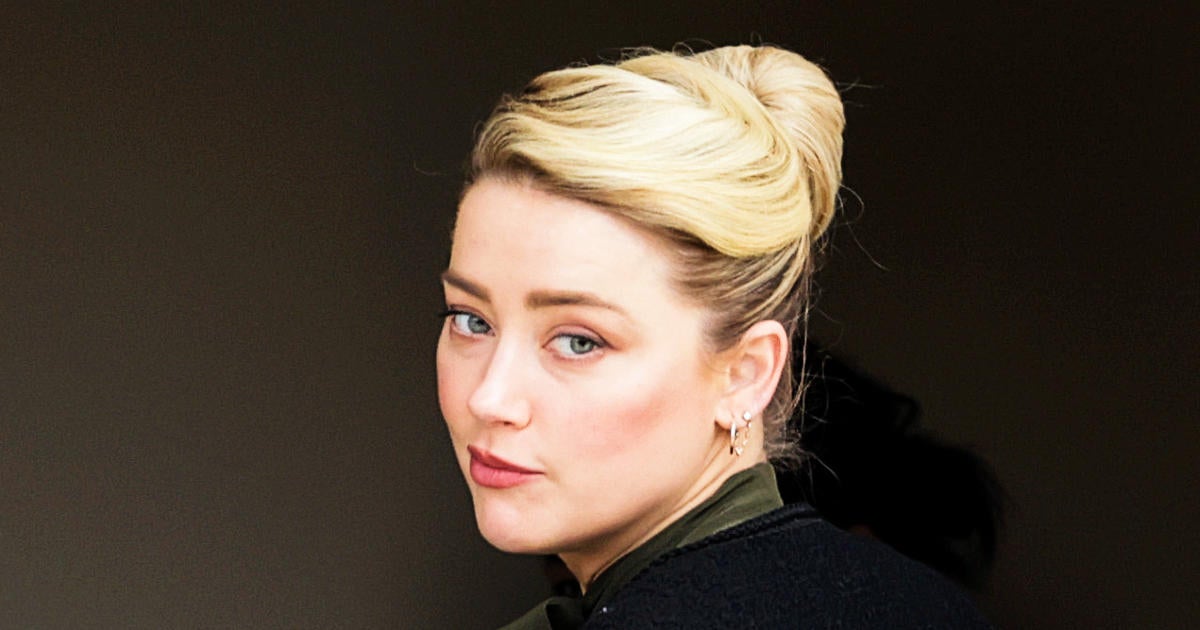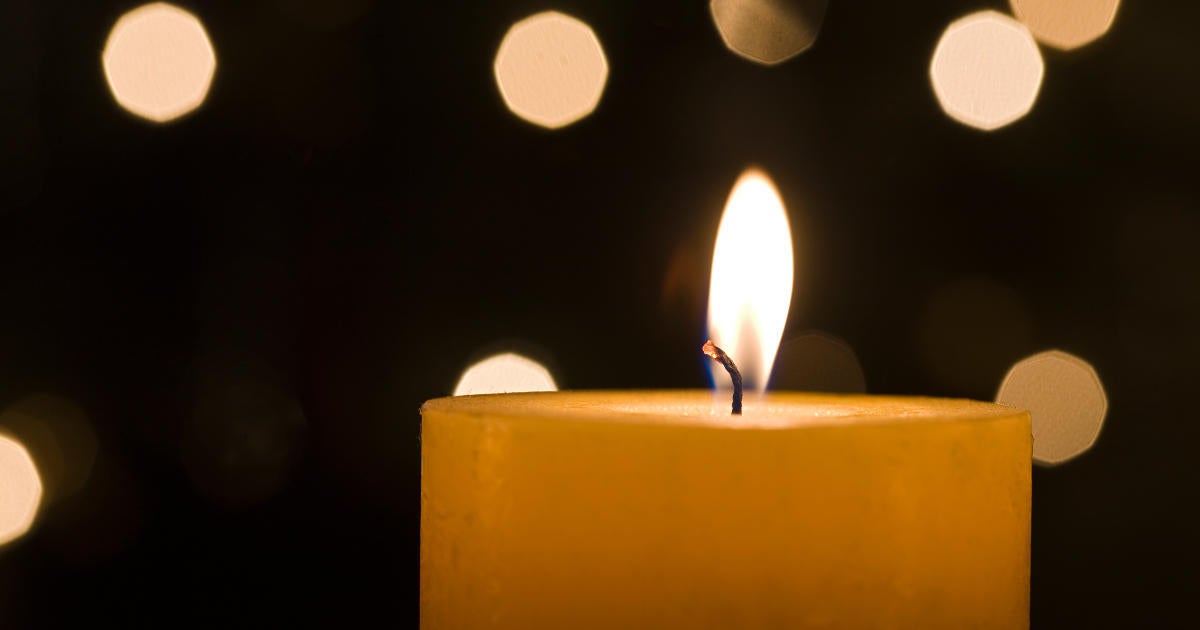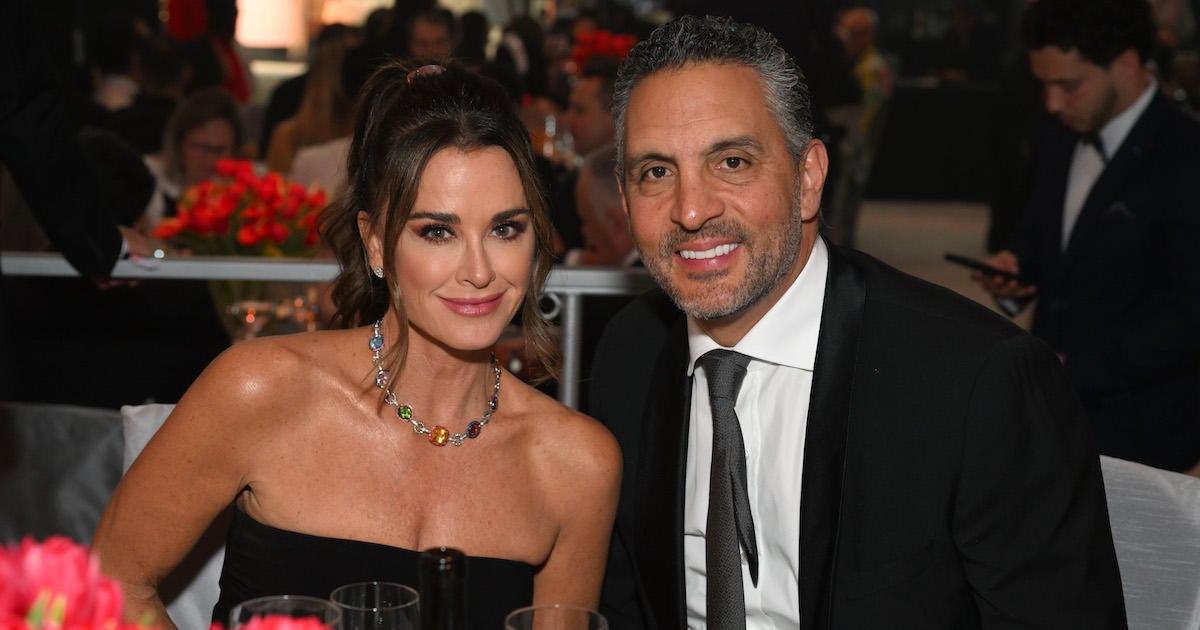‘The Acolyte’ Episode 4 Recap: Daytime Nighttime Suffering
:no_upscale()/cdn.vox-cdn.com/uploads/chorus_asset/file/19021663/spoiler_warning_v2.2.jpg)
Episode 4 of The Acolyte, “Day,” doesn’t only have a short title. At a little less than 27 minutes, not counting credits and “previously on,” it’s shorter than any episode of Andor, Obi-Wan Kenobi, or The Book of Boba Fett, and over almost as quickly as the most concise episodes of The Mandalorian. Which, in this case, is incredibly cruel, because the last minute is when it gets good. If Walt Disney did say “Always leave them wanting more,” as he’s sometimes reputed to have, then he would have approved of how this latest addition to his eponymous streaming service ends.
Of course, there’s no corollary that says you can’t make them want more before it’s time to leave. And on that score, “Day” gets more mixed results. In The Phantom Menace, a movie about the Sith at last revealing themselves to the Jedi, a fantastic climax obscured some of the serious flaws that preceded it. In “Day,” an episode about the Sith (presumably) revealing themselves to the Jedi (well, some of them), excitement about the big finish might overshadow some problems with the build-up—though this time, even the lightsaber-studded conclusion is more cliff-hanger than climax.
Last week’s episode almost certainly wasn’t the last time The Acolyte will take us back to the Brendok of yore, but any further flashbacks will wait for the back half of the season. In “Day,” directed by Alex Garcia Lopez and written by Claire Kiechel and Kor Adana (a name straight out of Star Wars), the good guys and bad guys—though who’s to say which is which—converge on Khofar, Kelnacca’s forest retreat. The Wookiee, it seems, has quiet quit the Jedi order: He may not have taken the Barash Vow, like his late buddy Torbin*, but he’s living in the wilderness and sending all messages straight to his holomail.
*This just occurred to me: Torbin is a Padawan in Episode 3’s flashback, which took place 16 years before present events. Sixteen years later, he’s a master. Yet in Episode 2, we learn that he “hasn’t spoken to anyone in over 10 years.” Did he become a master while he was silently hovering in midair and waiting for Mae to bring him Bunta? If not, and he made Master before he Barash’d, how did he climb the Jedi ranks so quickly, even as he was seemingly suffering from crushing remorse? Did whatever happened on Brendok put him on the fast track to promotion, contributing to his guilt?
Kelnacca’s Walden-esque seclusion might seem fit for the ’Gram—he’d probably be a big vanlifer if he weren’t so, well, big—but his #JediGoals lifestyle hides what appears to be a painful preoccupation with the past. Like a True Detective protagonist surrounded by Carcosa spirals, Kelnacca lives inside a stone ruin whose walls he’s adorned with the symbols of the Aniseya coven. Clearly, he’s still trying to come to terms with whatever went down on Brendok. But as with Torbin, only death will deliver him from his still-unspecified regrets.
Mae is heading to Khofar to kill Kelnacca, accompanied by Qimir, who just so happens to know where the Wookiee is. In addition to being just a regular guy who’s trying to have a good time, Qimir sure is handy to have around when you’re trying to assassinate a Jedi. (Nothing suspicious to see here!) The Jedi are heading to Khofar to warn Kelnacca that Mae is coming to kill him—and, hopefully, to intercept and peacefully apprehend Osha’s long-lost sister. Looks as though there’ll be more pain, because there’s gonna be a showdown.
To set the scene for that showdown, Sol must first persuade his Jedi colleagues to let him stay on Mae’s tail—and then persuade Osha to accompany him on the search for her twin sis. The scene at the Temple—after the one with the ginger Jedi drill sergeant—is instructive. As Sol and Co. review footage of Mae’s combat stylings, they discuss whether she might be a member of a “splinter order” (like the coven?) or “something worse.” No one says “Sith,” either because they can’t conceive of the Sith still existing or they can’t bring themselves to suggest it.
Our not-yet-old pal from the prequel films, future Jedi Council member Ki-Adi-Mundi*, pipes up to opine that the current Council should be informed, but Master Vernestra Rwoh puts the kibosh on that plan, saying, “The High Council would be obliged to alert the Senate. A scandal like this would inspire fear and mistrust. We should handle this ourselves.” In Rwoh’s repeated emphasis on optics, we can see the seeds of the complacency, denial, and entanglement with politics that plague the Jedi a century later. It’s no surprise that Palpatine and his predecessors out-plotted these people, if they’re this intent on keeping secrets not only from the public, but also among themselves.
*Mundi’s appearance caused a stir among some Star Wars fans—especially those who have it out for The Acolyte—because one source had previously suggested that Mundi was born about 40 years after this point on the timeline. But no, The Acolyte isn’t altering canon—that birthdate came from an obscure and noncanonical computer program. Also, so what if the series had made Mundi older than he’d been said to be before? Andor retconned Cassian’s age and backstory. Are we all experts on Cerean lifespans? Mundi’s fellow Council members Yoda, Yaddle, Yarael Poof, and Oppo Rancisis are hundreds of years old. Why not my man Mundi too? That said, one line from this scene does raise more interesting questions about canon consistency—more on Mundi to come.
Rwoh seems quite confident that Mae won’t put up a fight, even though the murderous apprentice has done nothing but fight so far. Still, Rwoh isn’t entirely sanguine about the threat Mae represents. “I fear Mae is only a small part of her master’s larger plan,” she confides to Sol. “A plan that is difficult to see. Some sort of shift. Something to tip the scales.” Yeah, I guess you could call the ascendance of the Sith and destruction of the Jedi a slight scale-tipper.
Order 66 certainly isn’t warranted, but on the heels of their disastrous meddling in the coven’s affairs last week, the Jedi don’t exactly treat Khofar’s flora and fauna with care, despite their supposed reverence for all living things. (“We don’t want to know what lives out here,” Sol says.) As they traipse through the forest en route to Kelnacca, they incur the wrath of an umbramoth that skewers itself on Sol’s saber, bug zapper-style. The umbramoth simply seems to be protecting its young; the Jedi are the interlopers. Yet they make no attempt to spare the flying creature’s life by calming or connecting with it. “It’s always an honor to get to witness anything or anyone transform into the Force,” Jecki says, though I’m not sure the umbramoth felt as honored to be killed. Osha, at least, seems to feel a bit bad about it.
A lot of this episode reminds me of Luke’s first trip to Dagobah. There’s the bad blood between a tiny humanoid and a droid: in Empire, Yoda and R2-D2; in “Day,” Bazil (a Tynnan straight out of the decades-old novel Han Solo’s Revenge) and Pip. There’s the run-in with initially unseen plant life: in Empire, R2 and the dragonsnake; in “Day,” Osha and the umbramoth. There’s the cozy, remote shelter where a Jedi occupant cooks food and tends to a fire; in Empire, Yoda’s hut; in “Day,” Kelnacca’s dwelling. There’s the apprentice complaining that what their master wants is impossible: in Empire, Luke; in “Day,” Mae. And while we’re comparing Khofar to other Star Wars planets with rich plant life, there’s the Ewok net trap from the forest moon of Endor: In Return of the Jedi, a Wookiee triggers the trap, whereas in “Day,” an Ewok’s pursuer does.
Speaking of that pursuer: Qimir carries a pack and doesn’t dress for the weather—the better to conceal a Sith suit and helmet, perhaps? The “Qimir is Mae’s master” hints are so heavy-handed here that they almost seem like a red herring. He’s very vague about his motivations and connection to her unidentified teacher. (“You know I haven’t,” he tells Mae when she asks if he’s seen her master’s face; maybe he hasn’t looked in a mirror.) He rushes her toward Kelnacca, perhaps sensing that the other Jedi are near. And after Mae reveals that she’s going to surrender to Kelnacca and turn state’s evidence against the Sith—“He’ll kill you,” Qimir warns—Kelnacca conveniently turns up dead, while Qimir is off screen. If Qimir is unmasked as Mae’s master, it won’t qualify as a twist. (Though Qimir might have his own master, which would.)
A few of my quibbles about “Day” (and The Acolyte writ large) concern the production, performances, and dialogue. As usual, the on-location shots are gorgeous. (Some of the footage of the Jedi trekking across the countryside evoke the Fellowship of the Ring leaving Rivendell—and both groups feature nine members, if we exclude Bazil.) The others … aren’t. When Sol portentously said, “Kelnacca is in there,” followed by a shot of the forest from afar, I got low-grade goosebumps. When our heroes(?) actually entered the lush-but-foreboding environment, though, the extremely “on-set” visuals broke the spell. I could almost hear someone saying “Action!” just before each scene started with an actor entering stage left or right. It doesn’t help that the Star Wars-ian wipes and irises are so frequent as to be a bit distracting, like a PowerPoint presentation with too many animated transitions between slides.
More seriously, the stoicism that seems like the Star Wars house style these days also extends to The Acolyte’s cast. (Lee Jung-jae’s warmth and passion stand out—which, to be fair, would make it all the more devastating if he gets Milkshake Ducked by a Brendok reveal.) Characters constantly speak the subtext aloud. “Maybe Sol brought you here to face [Mae], but maybe he brought you here to face yourself,” Yord tells Osha, not long before Sol says, “You’re not going to face her. You’re going to face your past.” Yeah, thanks, I got that: The whole “You are with me, I am with you” verse and episode-long flashback to Osha’s traumatic past kinda clued me in. There’s not a lot of levity in the script, and the few feints at comic relief haven’t consistently landed for me. (Though I am gonna need more Yord.)
The thing that’s making me bump off of The Acolyte most severely, though, is the abruptness of the character work. Because the full-length flashback came so early in the season and didn’t do much to advance our understanding, it seems as if we skipped a step in some core character progressions. Early in “Day,” Osha and Jecki converse like old friends, even though we haven’t seen them interact at great length before. When Osha—with a touch of Jedi overconfidence—says, “I sense things again in a way that gives me the courage to face [Mae],” the breakthrough comes so quickly that there’s no sense of her having overcome any obstacle. From our perspective, she just met Mae. What changed?
Mae’s morality reversal is the most whiplash-inducing development. “You know, after running through that forest for an extremely long time, I realized something,” she tells Qimir. “I don’t need to do this anymore.” Just like that, the apprentice who murdered Master Indara, tried to kill Torbin and Sol, and set out to kill Kelnacca has decided that the Jedi are just fine by her. “Osha being alive changes everything,” she says to Qimir, who’s enmeshed in her net. “My loyalty is to Osha. Not your Master.” Er, what? Since when?
Granted, there were some signs of this change of mind earlier in the episode. Sol thought Mae could be saved, and said as much. “When I told Mae you were alive, her eyes softened,” he told Osha. “She became a different person.” Although Mae called her sister “Jedi scum,” she still wanted to know what she was like. And sure, she had misgivings about her final lesson.* But for her to take a Tech Turn this extreme in the span of one abbreviated episode—with no additional interaction between Mae and her sister or the Jedi, and with literally less than two minutes of screen time between “I want this more than anything” and not wanting it at all—was weird. It’s like if Luke had told Darth Vader, “I know there is good in you,” and Vader had replied, “Yeah, you know, you’re right. Let’s go take down Darth Sidious.” Make us wait a while for the face turn! This wasn’t so much a redemption arc as a redemption speedrun.
*Maybe it’s me, but I had to watch the exchange about Mae’s master’s challenge a few times to be sure I was parsing it correctly. As Mae recounts to Qimir, “He says, ‘Your final lesson is one you teach yourself. You will kill a Jedi without a weapon.’ Attacking a defenseless person goes against everything the Jedi stands for. How do you kill someone like that? Unarmed. It’s not a test. It’s impossible.” What she means is that she’s supposed to kill Kelnacca without wielding a weapon herself, counting on the Jedi not to attack an unarmed person. (Hence her unheeded orders to Indara and Torbin, “Attack me with all of your strength,” and her attempts to exploit a loophole in her master’s instructions by stealing Indara and Sol’s weapons.) But the phrasing is ambiguous enough that she could be talking about abandoning her own scruples about attacking an unarmed target (a “Jedi without a weapon”). If you ask me, persuading Torbin to take poison should count as an unarmed kill anyway. And what about a good ol’ fashioned Force choke?
Also, while we’ll likely see Kelnacca in a flashback later this season, the debut (and demise) of the franchise’s first live-action Wookiee Jedi has been a bit of a dud thus far—not that Star Wars stories slighting Wookiees is anything new. (The majority of the few Wookiee Jedi in the current canon date from the High Republic era, but book readers know Kelnacca is no Burryaga.) On the one hand, it was somewhat shocking to see a Wookiee corpse scored with saber wounds. On the other, Kelnacca’s death would’ve hit harder if we’d formed any attachment to him. But hey, attachment is forbidden.
One thing I can’t find any fault with: the entrance and appearance of Darth Teeth, a.k.a. Darth Qimir, a.k.a. Darth Jasithto. The Sith should be scary, and this Sith is. For one, his helmet is terrifying—a misshapen mess like Kylo Ren’s, crossed with Venom’s surfeit of teeth. For another, he’s freakily out of focus when he first appears behind Osha’s back. (Run, he’s fuzzy, get outta here.) For another, he hovers like Vladimir Harkonnen, Count Dooku in Genndy Tartakovsky’s Clone Wars, and Vader standing on top of his TIE fighter in Rebels. Yes, they fly now. OK, maybe more like levitate. But really, why wouldn’t Force users fly more than they do?
“What is that?” Jecki asks, echoing Obi-Wan Kenobi’s question to Qui-Gon Jinn after the latter’s encounter with Darth Maul: “What was it?” No wonder the Jedi don’t know their enemy. They’re face to face—or face to helmet—with a reality that not even Yoda is old enough to know as more than a nightmare.
Now, I promised that we’d return to Master Mundi, who has to weigh in whenever Wookiees are attacked. One of Mundi’s few Phantom Menace lines comes after Qui-Gon reports the presence of a possible Sith to the Council, prompting Mundi to exclaim, “Impossible. The Sith have been extinct for a millennium.” Why, might one wonder, does Mundi declare the Sith extinct for a millennium if they’d announced themselves a century earlier?
We don’t know, but there are plenty of plausible reasons. Maybe Mae and her master aren’t actually Sith (though it seems like a safe assumption). And as of now, Mundi still hasn’t met master or apprentice; maybe all or most of the Jedi on Khofar will die before they can report what they saw. It doesn’t bode well for them that aside from Sol, Jecki, and Yord, we don’t know their names. (Between flicking his fingers to hurl Osha away—instead of slicing her up, which would’ve been easy—and powerfully pushing the Jedi back, this dark sider doesn’t seem to be stressing about the eight-to-one odds.) Or maybe Mundi is still keeping quiet about something he and other Jedi conspired to suppress. The more time elapses, the harder it is to come clean; how do you broach the subject of having seen the Sith a century ago? (“Oh yeahhh, there was that one Sith sighting.”) If he is part of an effort to sweep the Sith under the rug—or mistakenly believes that the danger was dealt with—we know he pays a steep price.
Just as nightfall follows day on Khofar, so might “Night” follow “Day” on The Acolyte. How dark could it get, now that Kelnacca is no more and the suspected Sith is on the scene? Mae’s master is spoiling for a fight, and so is The Acolyte’s audience, which hasn’t seen one for two weeks. (The underwhelming matchup between Sol and a single umbramoth doesn’t count.) After the tease at the end of this episode, the culmination must be big. Maybe bigger than the Duel of the Fates.
We wrote this one and next weeks together and they kind of had a total ballpark limit for the both. For *reasons* next week’s had to be the longer one so this one had to be kept short (I think it’s the shortest of the 8? Don’t quote me tho)
— “CK” Kiechel (@clairekiechel) June 19, 2024
Because the twins are “always one,” Mae’s sudden doubts about the Sith may portend a crisis of faith in the Jedi for Osha, when one of these weeks, she and we learn the truth about Brendok: what the Jedi did, whether Mae was framed, and how she walked away from her not-so-unsurvivable fall. So, just as Mae turned to the light in “Day,” Osha may turn to the dark in “Night.” Could Sol’s sins be so heinous that Osha will be the one to kill him, taking advantage of his trust to do it without a weapon? Perhaps by pushing him off a cliff, a dark reflection of the two times he saved her? (Sol does seem obsessed with falls being fatal.) After all, Osha’s the one whose emotional wounds continue to fester this week, while Mae gives up her grievances (almost too) easily. Perhaps it’s symbolic that Mae’s face emerges from gloom into white light at the end of the episode, whereas Osha’s is wreathed in red.
:no_upscale()/cdn.vox-cdn.com/uploads/chorus_asset/file/25497727/Mae.png)
:no_upscale()/cdn.vox-cdn.com/uploads/chorus_asset/file/25497728/Osha.png)
All might make sense by the end: “I’ll explain everything,” Sol, the, um, sole surviving Brendok Jedi, assures Osha. But it’s tough to expect a perfect payoff down the road when the weekly installments are only so satisfying. Halfway through the season, The Acolyte has to ramp up the action and start putting puzzle pieces in place—or some viewers, like Mae, might realize that they don’t need to do this anymore.







